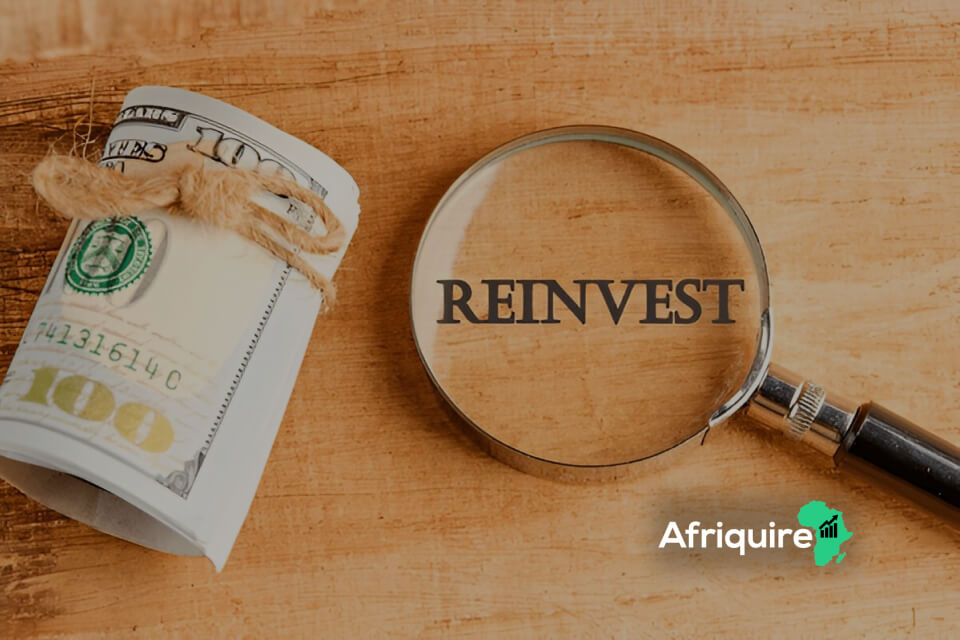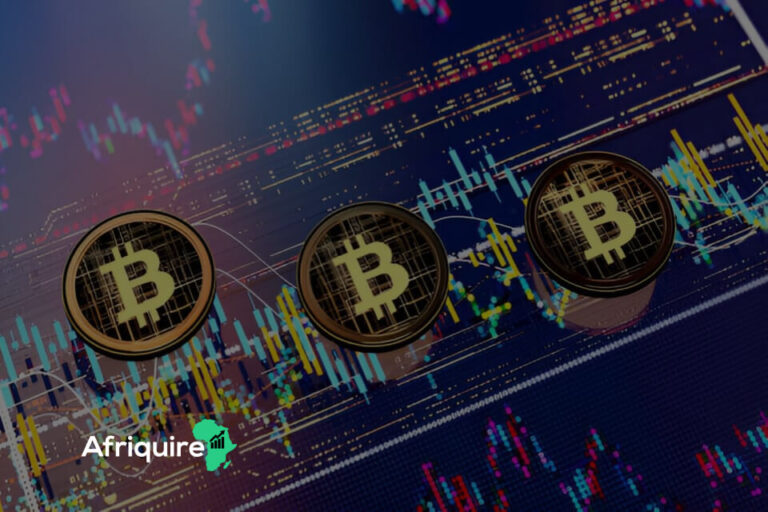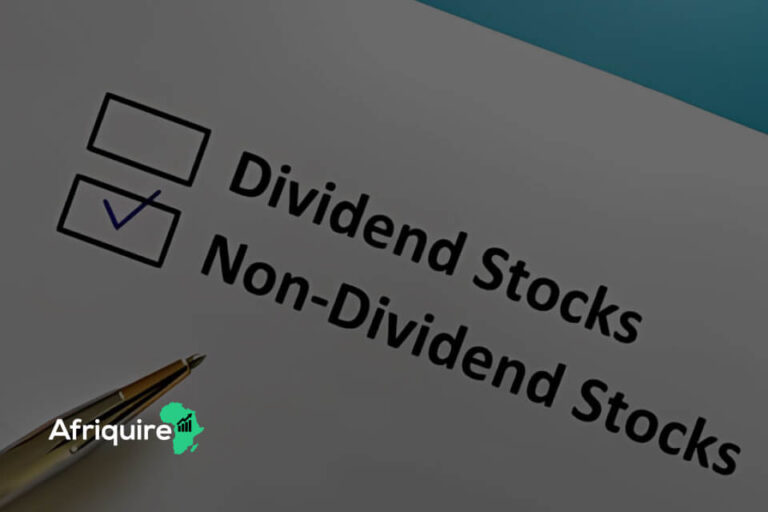Introduction
Learning how to reinvest dividends is one of the smartest ways to grow your money over time. When you reinvest, you use the money you earn from your investments to buy more shares instead of taking it as cash. This simple step helps you enjoy compound growth, which means your earnings start making more earnings for you. Many young Africans are now seeing that reinvesting dividends can help them build long-term financial freedom, especially with more online investment apps available today.
With the right understanding of how to reinvest your dividend income, you can grow your portfolio steadily without always adding new money. In this article, you will learn the basics and benefits of reinvesting dividends for continuous growth and lasting wealth creation.
Understanding Dividend Reinvestment and Compound Growth
To understand how to reinvest dividend returns well, you must first know what dividend reinvestment means. Dividends are small payments companies give to investors from their profits. When you reinvest these dividends, the money is used to buy more shares in the same company or fund. Over time, those new shares will also start paying dividends, and that helps your investment grow faster – this is called compound growth. You can set this up easily through a Dividend Reinvestment Plan, known as a DRIP, which does it for you automatically. Learning how to reinvest dividend income is a very important skill, as it helps young Africans take advantage of long-term growth and build strong investing habits early in life.
The Power of Compounding
Knowing how to reinvest dividend payments is one of the easiest and smartest ways to grow your money as an investor. When you reinvest your dividends instead of collecting them as cash, you buy more shares in that company or fund. Over time, those new shares also start paying dividends, which then buy even more shares. This repeating cycle is called compounding, and it helps your money grow faster than you might imagine.
How Reinvested Dividends Accelerate Returns
When you reinvest your dividends, you make your investment work even harder for you. Instead of spending the money, every dividend payment goes back into buying more shares. As a result, you end up owning a larger part of the company or fund. Each new share you get also begins to pay dividends, which are then used to buy even more shares. This creates a powerful cycle that increases your total returns over time. That is how compounding works!
Let’s take a simple example. Imagine you own 100 shares of a company, and every year you receive a cash dividend. If you spend that money, your growth will only come from the share price going up. But if you reinvest those dividends, you gradually buy more shares. This means that next year you might have 104 shares, then 109, and so on. This steady growth adds up quickly!
Also, DRIPs often allow you to buy fractional shares, so even small dividend payments can be used fully. You don’t need to wait until you have enough money to buy one whole share. Every little amount goes straight back into your investment
Real – World Example of Compounding Over Time
Let’s imagine you invest ₦100,000 in a Nigerian company that pays a 5 percent dividend each year. If you collect that ₦5,000 in cash, your shares remain the same. But if you use that ₦5,000 to buy more shares, the next year you will own slightly more. This means your dividend will increase too, maybe ₦5,250 or more.
By repeating this process of buying new shares with your dividends every year, your returns grow faster. After 10 or 20 years, you would have much more money than if you had just taken the cash every time. This is how many successful investors grow their wealth – they let compounding do the heavy lifting.
Over many decades, the difference between reinvesting and spending your dividends can be massive. Reinvesting allows your profits to grow on top of previous profits, and that’s what creates long-term financial success.
Benefits of Staying Invested Long – Term
There are several good reasons to stay invested and keep reinvesting your dividends.
First, you benefit from dollar-cost averaging. You get to buy more shares when prices are low and fewer when prices are high. This helps reduce risk over time.
Second, staying invested means you avoid trying to “time the market,” which is very hard to do correctly.
Third, your portfolio continues to earn more because every reinvested dividend keeps growing your total investment.
Most brokers also give you the freedom to choose which investments you want to reinvest dividends into. This flexibility allows you to manage your strategy easily. However, remember that reinvested dividends may still be taxable income depending on your country’s tax rules, so it’s wise to check with a financial expert if you’re unsure.
When you stay invested and allow compounding to work, you give yourself the best chance to build serious wealth over time. In short, learning how to reinvest dividend payments and staying committed to your investments can put you on the path to long-term financial success, no matter which country you are investing from.
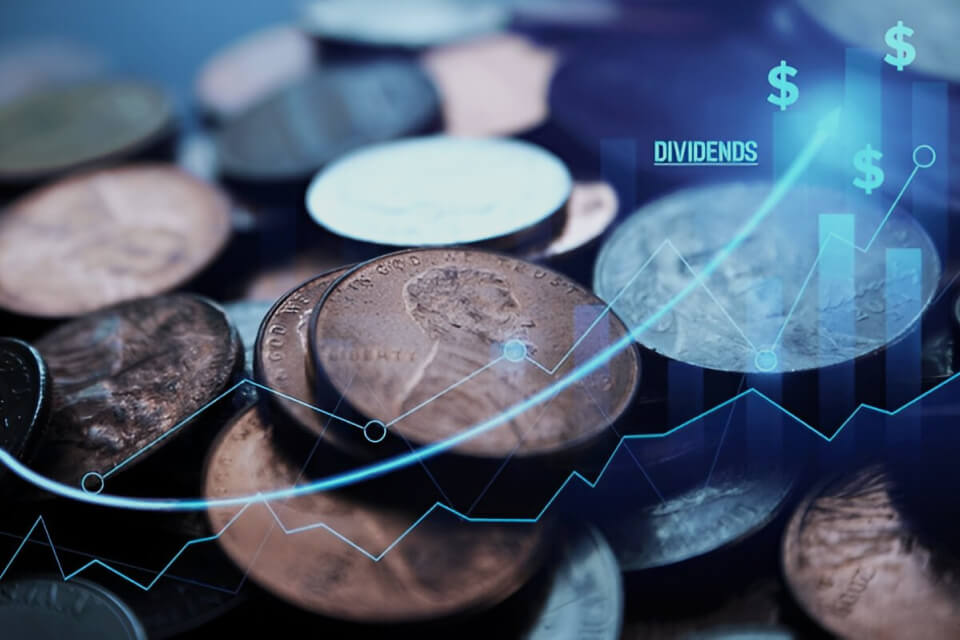
Options for Reinvesting Dividends
Learning how to reinvest dividends is one of the smartest and easiest ways to grow your money over time. No matter where you live, the idea is simple – instead of spending the money companies pay you as dividends, you use it to buy more shares. This way, your money keeps working for you and continues to grow.
Let’s look at the main options available for anyone learning how to reinvest dividend income.
Enrolling in Dividend Reinvestment Plans (DRIPs)
One easy way to reinvest is by using Dividend Reinvestment Plans (DRIPs). Many brokers and companies offer this option. A DRIP allows your dividends to be automatically used to buy more shares of the same company that paid them. It saves time and ensures that every kobo or shilling you earn keeps working for you.
How DRIPs Work with Public Companies
When you join a DRIP, your broker automatically uses your dividend payment to buy more shares, sometimes even a fraction of a share. For example, if you own shares in a company listed on the Nigerian Exchange or the Johannesburg Stock Exchange, your dividends can be used to buy more of that company’s stock.
Over time, this increases your ownership without you needing to add new cash. Some brokers offer DRIPs for free, while others may charge a small fee. Either way, it’s a simple way to keep growing your investment without doing much work.
Advantages of Automatic Reinvestment
The biggest advantage of DRIPs is simplicity. Once you set it up, the process runs automatically. You don’t have to remember to reinvest each time you receive a dividend. It also encourages long-term investing, because your money keeps growing quietly in the background.
Another benefit is discipline. Many investors are tempted to spend their dividend cash on small wants, but with a DRIP, your money is locked into growing your portfolio. Even small amounts can grow into large returns over time through compounding.
Tax Considerations for DRIPs
Even though DRIPs increase your number of shares, most African countries still treat dividends as taxable income. This means you may still have to declare them when filing your taxes. However, if you hold your DRIP shares in a special account like a pension or investment savings plan, the dividends might grow tax-free until you withdraw them.
So before joining a DRIP, always check your country’s tax rules or talk to a financial adviser to know how it applies to you.
Manually Reinvesting Dividend Payouts
If you like more control, you can manually reinvest your dividend payments. Instead of automatically buying more shares of the same company, this option lets you decide where to put your money.
Using Brokerage Accounts for Reinvestment
Most online brokers in Africa allow you to receive dividends as cash. Then, you can decide how to reinvest them, maybe buy more of the same company, try a different company, or even invest in mutual funds or exchange-traded funds (ETFs).
Today’s investment apps make it simple to track your dividends and reinvest quickly. Some platforms even have tools that allow partial control, so you can choose which shares or ETFs to reinvest in automatically.
Choosing Which Stocks or ETFs to Reinvest In
When reinvesting manually, it’s smart to think strategically. You might choose to buy more of the same company if it’s performing well. But if you want to spread your risk, you could reinvest in a different sector.
For instance, if you already have many shares in banking or agriculture, you could use your dividends to buy shares in technology or renewable energy. This diversification helps protect your investment if one sector doesn’t perform well. Always check company performance and market trends before deciding.
Timing and Market Conditions
Timing also matters when learning how to reinvest dividends manually. Some investors reinvest their dividends immediately, while others wait for stock prices to fall so they can buy more shares for the same amount of money.
Your choice depends on your goals and view of the market. However, it’s better not to leave dividends sitting too long as cash. Idle money does not earn dividends, and that slows your compound growth.
Both DRIPs and manual reinvestment are good, and many investors actually use both. DRIPs are great if you want everything to run automatically with little effort. Manual reinvestment, on the other hand, gives you more control and lets you take advantage of market opportunities.
Whichever method you choose, the most important thing is consistency. Keep reinvesting your dividends regularly, and you’ll enjoy the full power of compounding.
Setting Up a Dividend Reinvestment Strategy
Understanding how to reinvest dividend payments is one of the smartest ways to grow your wealth over time, especially in Africa where long-term financial planning truly matters. When you reinvest dividends, you are allowing your money to work harder for you, and the power of compounding takes care of the rest. Let’s go step by step to see how you can start and take charge of your investment journey.
Assessing Your Financial Goals
Before you even start reinvesting your dividends, you need to understand your financial goals. What do you really want to achieve? Do you want to build wealth for retirement, save for your children’s education, or reach another big goal? Knowing what you are aiming for helps you create a plan that fits your life.
Your goals, age, and how much risk you can take will all affect your decision. For example, if you are still young and don’t need your dividend income immediately, it’s wiser to reinvest it. This is because, over time, reinvested dividends can grow through compound interest. This means your returns will begin to earn their own returns. However, if you will need money soon, you can divide your dividends: reinvest some and take the rest as cash.
Being clear about your goals from the start will help you stay calm when the market goes up and down. You will always remember why you started, and this helps you make smart choices even in hard times.
Selecting the Right Dividend – Paying Stocks or Funds
Choosing the right stocks or funds is another key part of how to reinvest dividend. You should look for companies or funds that have a record of paying dividends regularly and even increasing them over the years. These are sometimes called dividend aristocrats or blue-chip stocks. Such companies are usually stable, have strong profits, and care about rewarding their shareholders.
At the same time, try not to put all your money into one company or industry. Diversify your portfolio by spreading your investments across different sectors. Many African investors now use dividend-focused ETFs or mutual funds to invest in many companies at once, reducing risk.
When choosing, check for things like:
- The company’s dividend growth history
- The dividend yield (how much it pays compared to its share price)
- Its financial health and debt levels
Be careful not to chase very high dividend yields. Sometimes, a company offering very high dividends is actually struggling. Instead, look for companies that are steady, profitable, and known for consistency.
Tracking and Monitoring Reinvested Dividends
Once your dividend reinvestment plan is running, you must keep track of your progress. Staying engaged helps you know how your money is growing and whether your plan is still working.
Using Online Portfolio Tools
Most online brokers and investment platforms now make it easy to track your dividends. They show you how much dividend you’ve earned, confirm if they are being reinvested, and let you see your total portfolio growth. Some platforms even offer automatic dividend reinvestment plans (called DRIPs). With DRIPs, your dividends are used to automatically buy more shares, without you lifting a finger.
You can also use dividend tracking apps or portfolio dashboards to watch how your share count increases month by month. It’s simple, and it helps you stay motivated when you see real growth happening.
Reviewing Performance Quarterly or Annually
It’s also very important to review your performance often. You can do this every three months or at least once a year. Check how much extra income your reinvested dividends have produced, and if your total returns match your goals.
Ask yourself: are the companies you invested in still strong? Are they still paying and growing their dividends? If any company has started having problems or stopped growing its dividend, it might be time to replace it.
Don’t forget to think about taxes too. In some African countries, you can invest through tax-free or tax-advantaged accounts (like ISAs or pension accounts in the UK). This helps your dividends grow faster because you won’t pay tax on the income. Make sure you know the rules that apply in your country so you can make the best decision.
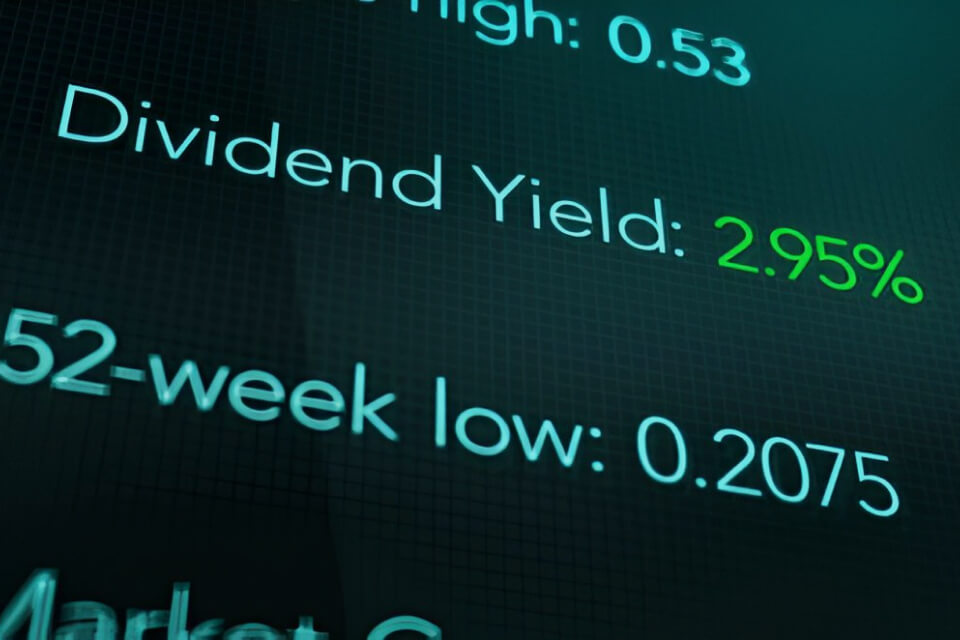
Avoiding Common Mistakes
Learning how to reinvest dividend income is a smart way to grow your money through the power of compounding. When you reinvest your dividends, you use the money you earned from your investments to buy more shares, which helps your wealth grow faster. But to enjoy this growth properly, you must avoid some common mistakes that new investors often make. Let’s look at these mistakes and see how you can avoid them while building your future confidently.
Ignoring Tax Implications
One big mistake many people make is forgetting about tax when they reinvest dividends. In Nigeria, South Africa, or the UK, investors often receive their dividends into normal brokerage accounts. However, even when those dividends are automatically reinvested, they can still be taxed. For example, in the UK, from April 2025, you can earn up to £500 in dividends before paying tax. Anything above that amount will be taxed unless you keep your investments inside a tax-free account like a Stocks & Shares ISA or a pension.
Therefore, if you want to keep more of your profit, try using tax-advantaged accounts whenever possible. Also, remember that taxes are due whether you take the dividend in cash or reinvest it. Many countries require you to report all dividend income at the end of the year. In short, always think about tax before setting up your reinvestment plan. And if you are unsure, talk to a tax adviser to help you plan wisely.
Reinvesting in Poor – Performing Companies
Reinvesting dividends is powerful, but it only works well when the company you are investing in is strong. Some people make the mistake of reinvesting their dividends back into companies that are not doing well or whose share prices keep falling. This can lead to losing money instead of growing it.
Before you reinvest, always check if the company is financially healthy. Look for steady earnings, low debt, and good cash flow. Companies known as blue-chip or dividend aristocrats are often safer because they have a long record of paying dividends regularly. Instead of reinvesting blindly, choose companies that show strength and stability. Also, review your investments regularly so that you can move your dividends to better-performing companies when necessary. Remember, putting your money into solid companies helps compounding become your best friend—not your enemy.
Overlooking Diversification
Another mistake people make is putting all their reinvested dividends into one or just a few companies. While it feels safe to stick with names you know, this can be risky. Markets change, and a strong company today might struggle tomorrow.
To reduce this risk, diversify your investments by spreading them across different industries like technology, finance, healthcare, consumer goods, and utilities. You can also reinvest dividends into diversified ETFs or investment trusts, which contain shares from many companies at once. This makes your portfolio stronger and less affected if one company stops paying dividends. In addition, diversification helps protect you from big losses caused by sudden market changes.
Transitioning from these key points, it’s also important to know how your brokerage platform handles dividend reinvestment. Some platforms have a minimum amount—like £10—before they reinvest automatically. So always check your account rules to avoid surprises.
Besides that, try to build a dividend reinvestment plan that fits your goals. If you take time to plan carefully and learn from financial experts, your portfolio will grow steadily over time. Using digital investment tools or working with a financial adviser can also help you track and adjust your reinvestment strategy easily.
Frequently Asked Questions (FAQs)
1. What does it mean to reinvest dividends?
Reinvesting dividends means using the money you earn from your investments to buy more shares of the same company or fund. This helps you grow your investment faster because you are using your profits to make more profits.
2. What is a DRIP?
A Dividend Reinvestment Plan (DRIP) is a system that automatically uses your dividends to buy more shares for you. It saves you time and often avoids extra fees.
3. Can I reinvest dividends manually?
Yes, you can. Instead of letting it happen automatically, you can collect your dividends as cash and choose when and what to buy later. This gives you more control but requires more effort.
4. Why is reinvesting dividends good for growth?
Reinvesting helps your investment grow through compound growth. That means your dividends buy more shares, and those new shares also earn dividends. Over time, your money grows faster and stronger.
5. What should I consider when reinvesting dividends?
Think about your goals, costs, and how much control you want. You can choose between automatic reinvestment (for less stress) or manual reinvestment (for more flexibility).
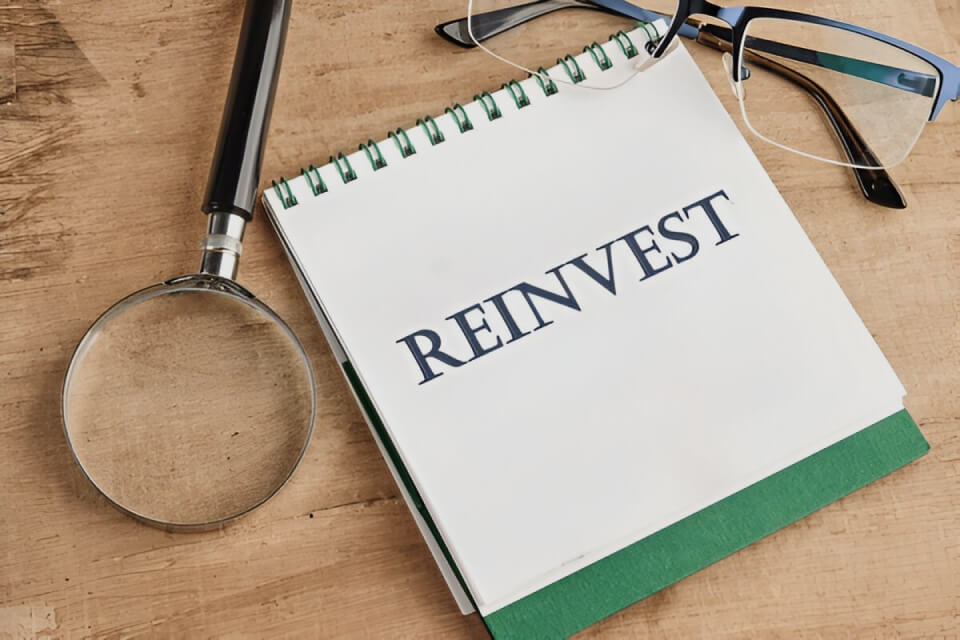
Conclusion
In conclusion, learning how to reinvest dividends is one of the smartest ways to grow your wealth over time. It takes advantage of the power of compounding, meaning your money earns more money for you. Using a Dividend Reinvestment Plan (DRIP) makes it even easier because it automatically buys more shares without charging you extra. Whether you do it manually or automatically, what really matters is staying consistent and focused on your long-term goals.
Reinvesting dividends increases your shareholding and builds your portfolio steadily with less effort. However, always remember that even reinvested dividends can be taxed, so plan wisely. This simple habit can make a big difference in your financial future. Start early, be patient, and let your dividends keep working for you. Over time, you’ll see your investments grow into something truly rewarding for you and your family.
